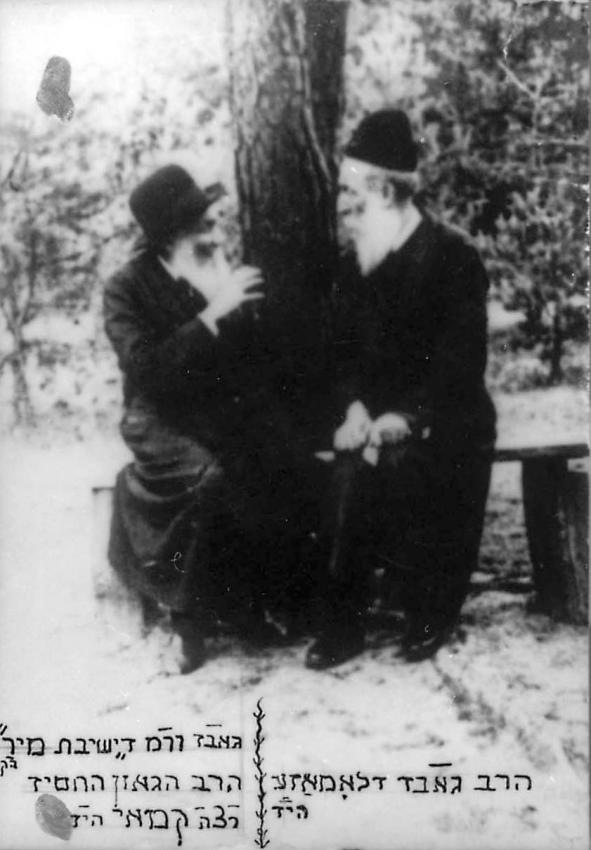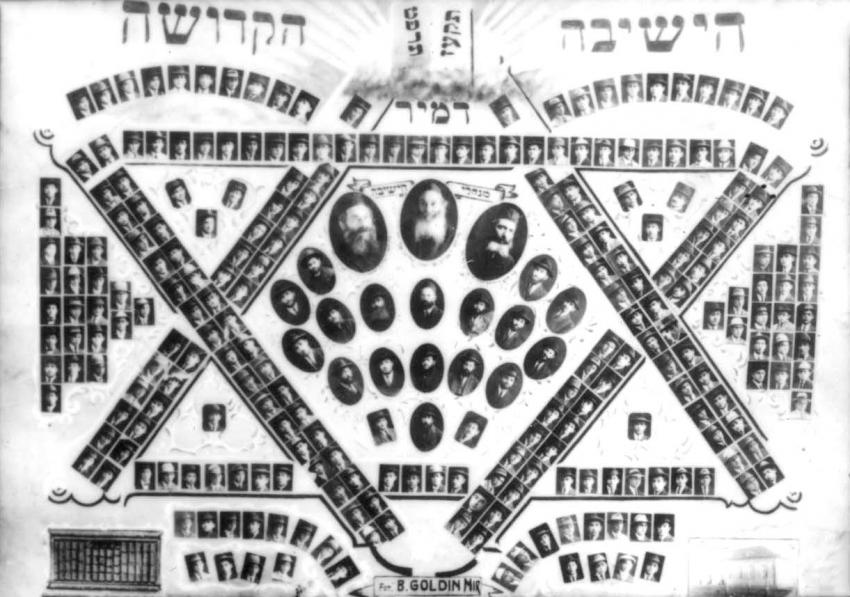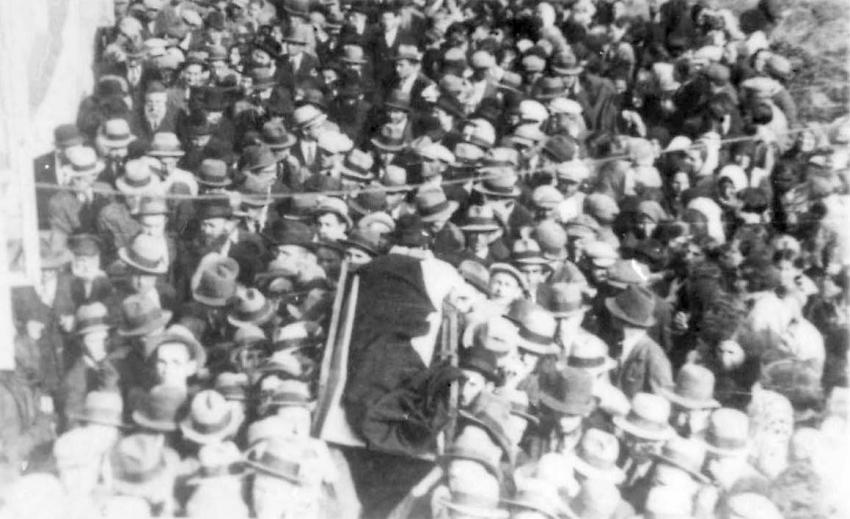The Mir Yeshiva

New Year greeting from the managers of the Mir Yeshiva, 1934. Right – the supervisor Rabbi Yerucham Leibowtiz; center – Rabbi Avrohom Zvi Kamai; left – Rosh Yeshiva Rabbi Eliezer Yehuda Finkel
The Mir Yeshiva was established in 1815, and was the second most important yeshiva after the Volozhin Yeshiva in Lithuania. It was founded by the merchant and Torah scholar Chaim Tiktinsky, who placed his son Avrohom at its head. More about the
The Golden Age of the Mir Yeshiva
The yeshiva is described by L. Mendelstam:
"The yeshiva was situated in a large building with just one floor, in a large hall that sprawled across its entire width and length. Next to the walls were 14 large, long tables… and each table had a name: the "Rabbi's Table," and next to it the "Yeshiva Table" and so on. The Rabbi's Table was the most exalted, and it was a great honor for a student to be placed there. Other tables were on a lower level of importance, like the "Table Behind the Heater," where the loafers were placed, and the "Educated Table" where the apikorsim (heretics) were seated."
L. Mendelstam, "Memories of the Mir Yeshiva Students," Mir, p. 119
Shlomo Zaltzman was 15 years old when he arrived at the Mir Yeshiva in 1887. He recalls:
"Studies at the yeshiva continued without break. Some of the students even learned all night long. The sounds of the students could be heard across the streets, each one with his own voice, each student his own trill, and every stranger that came to the town was dumbfounded… until he finally became used to the noise… even I slowly got used to the tumult that had once made such a huge impression on me, until I finally became one of the noisemakers myself."
Emmanuel Etkes, Shlomo Tikochinksy (eds.), Yeshivot Lita: Pirkei Zichronot (Lithuanian Yeshivas: Memoirs), p. 315
The golden age of the Mir Yeshiva was during the interwar period. Some 500 students studied there, most of them from towns in Lithuania and Poland. They were joined by approximately 50 students from the Americas, most of them from the US, 40 from Germany and groups from South Africa, Switzerland, Holland, Czechoslovakia, Belgium, the UK, Romania and Hungary. A few also came from Italy, Finland and Australia.
Bruria Retner-Rosenblum, born in Mir, was a member of the Hechalutz youth movement. She described the yeshiva:
"In contrast to the sorrowful air of the synagogues there was a quite different atmosphere at the yeshiva. The light and joy within made us forget what was going on outside its walls. The joy of learning Torah prevailed. On Simchat Torah, the Yeshiva giants Rabbi Kamai, supervisor Rabbi Yerucham and Rabbi Finkel joined the students in the circle with Torah scrolls in their arms. Their eyes were closed, their heads raised and their arms entwined with elevating the atmosphere and devotion of the songs and the dancing. The exalted mood caught us too, as if we were taking part in the festival and the love of the Torah."
Bruria Retner-Rosenblum, "A Walk in the streets of Mir," Mir, p. 202
After the outbreak of WWII and the annexation of Mir to the USSR, most of the yeshiva's rabbis and students left the town and moved to Vilna, which had been transferred to independent Lithuanian rule. Following a string of events, the rabbis and students arrived in Shanghai, where they remained until the end of the war. After the war, most of the yeshiva members emigrated to the US. Some of the students remained there, reestablishing the Mir yeshiva in Brooklyn, known as Mirer Yeshiva, and some emigrated to Eretz Israel and built a new Mir Yeshiva, known as Yeshivas Mir Yerushalayim, in the Beit Yisrael neighborhood of Jerusalem.



